-
- USA/Canada 1-800-285-2726
- Australia (02) 8006 4411
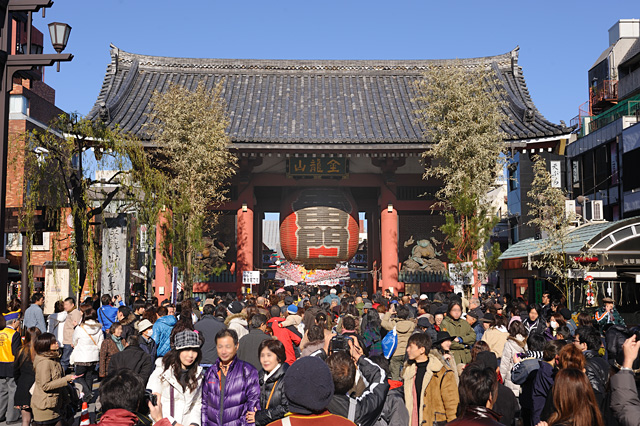
Sensoji Temple is Tokyo’s oldest and most visited temple. It was completed in 645 and has been a prominent landmark of Tokyo. Visitors will first enter Kaminarimon, which literally means Thunder Gate. As you make your way through this gate, you will find yourself surrounded by the Nakamise shops until you reach the second gate, Hozomon. Past Hozomon Gate is where the temple’s main hall and a gorgeous five story pagoda stand.
While at the temple, try drawing your fortune at the omikuji booth. For a small donation of 100 yen, guests can shake the large hexagonal box placed by the temple until a stick falls out. The stick will have a number on it which then you will open the corresponding numbered shelf for the fortune. The fortunes are written in Japanese on the front but translated to English on the back. If you get a bad fortune, it is customary to tie the omikuji paper onto the nearby rack where other omikujis are tied so that you can leave your bad luck at the temple instead of taking it home with you. Often considered the most popular Japanese Temple in Tokyo, Sensoji is a popular destination for Hatsumode, the first year's temple visit. Sensoji draws thousands to pray for good fortune, and is often a background feature in comedic anime, manga, and dramas. The Japanese people who visit Sensoji for the New Years don't mind the crowds, often enjoying the time spent with family members at the expansive temple.
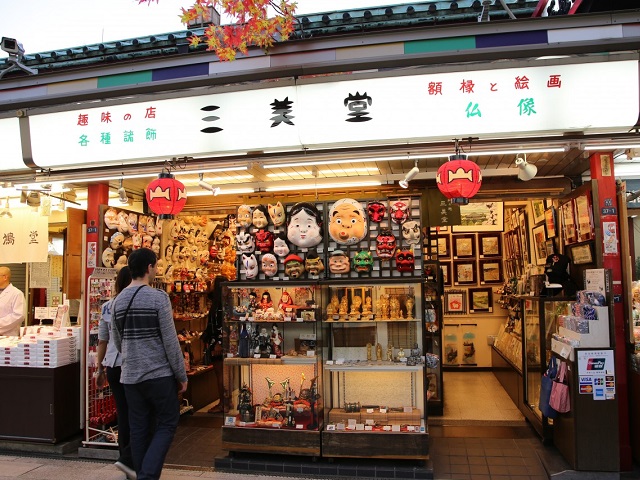
When entering Kaminarimon to find your way to Sensoji Temple, travelers will walk down a long shopping street featuring a wide variety of traditional Japanese snacks and souvenirs. Known as Nakamise Dori, this rustic shopping street is considered one of the best souvenir shopping places in Japan. Housing a wide selection of key-chains, nick-knacks, T-shirts, to more traditional goods like Happi Coats and other Japanese arts & craft items.
Travelers can purchase snacks such as Ningyoyaki, cakes with red bean paste fillings, often shaped in cute designs like Hello Kitty, Kaminarimon, and Tokyo Skytree. These Ningyoyaki are popular souvenirs of Asakusa and are often enjoyed after drawing a good omikuji fortune.
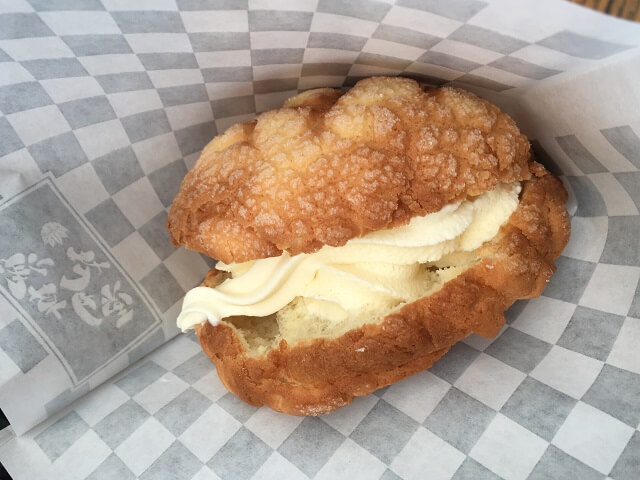
Among the list of popular Asakusa restaurants and shops, Kagetsudo is famous for it's extra fluffy melon-pan bread. Using their own fermentation methods, Asakusa Kagetsu-do is able to produce massive, fluffy, flavorful melon-pan bread. While typical melon-pan have a nice size, they are fairly dense in texture. The fluffy melon-pan of Kagestu-do offers larger, mouthwatering sizes. For an added treat, foodies can opt to have a spin on the classic Japanese dessert by adding a filling in the center. There are four Kagetsu-do locations sprawling throughout Nakamise-dori, just in case you can't find where to buy these jumbo-treats. Kagetsu-do also offers other great snacks, like delicious pies, kakigori shaved ice, and mochi zenzai.
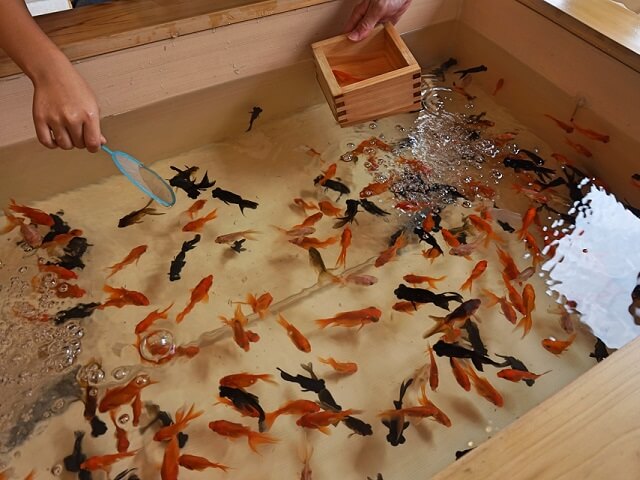
If you plan on exploring all of the Kagetsu-do shops for delicious melon-pan and pies, you may be surprised to find nothing but fish swimming about their Kingyo shop. Instead of offering fluffy jumbo melon-pan, the Kingyo-shop is a testament to a Japanese summer festival favorite. Goldfish scooping is a popular past time for the Japanese people, often enjoyed during events like school festivals or the Kyoto Gion Matsuri.
A simple game that requires a bit of luck and some skill, guests can try their hand at scooping out little goldfish with paper nets. The goal is to scoop as many into a cup as you can before the paper on your net rips through. Typically, most players walk away with 2 or 3 fish, but some skilled goldfish scooping players can snag up to 25 goldfish before their nets break.
For more fun in Asakusa, also check out the delightful Traditional Art Candy of Ameshin.
Or try the delicious Green Tea Ice-cream of Suzuki-en located nearby Asakusa.
Though located in Sumida next to Asakusa, a visit to Tokyo Skytree, the highest building in Japan, is a bucket list item for many who travel to Japan. A unique building, this television broadcasting tower is open to the public featuring grand observation decks, a shopping complex, and even an aquarium. Most people visit Tokyo Skytree to see breathtaking views of the Tokyo Skyline from one of the two observation decks. The first observation deck takes you up 350 meters, while the second deck goes even higher to 450 meters. Tourists can enjoy an impressively fast ride to the first deck via elevator, or can continue their journey to the second deck. Even better, travelers visiting during the Winter holidays can enjoy dazzling illumination shows of the tower.
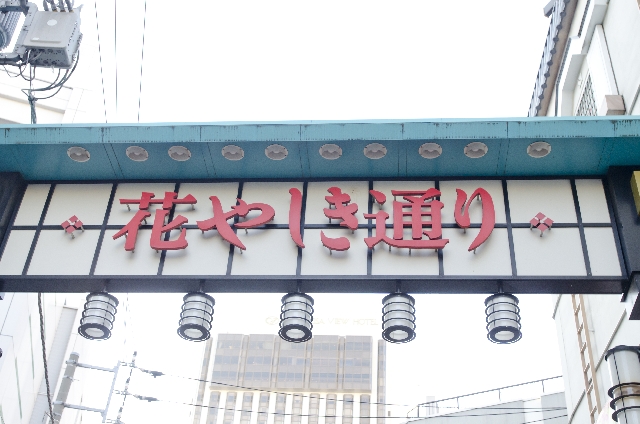
Care to take a ride at Japan’s oldest amusement park, founded in 1853? Hanayashi in Asakusa offers a nostalgic feel and is great for all ages. Young children will enjoy the rides and adults will reminisce the old town feel. The park has a variety of rides, from roller coasters to tower rides. There are also other activities such as a haunted house like building and swan rides in a lake. You can even get your fortune told or grab a crepe if you wish.
With such a wide variety of traditional Japanese culture attractions, modern day Tokyo fashion, and an inexplicable blend of old world and new, there's no questioning the popularity of Tokyo's charming temple town. Enjoy the sights and sounds of Old Japan during an unforgettable vacation with Japan Deluxe Tours on our fully guided line of Cherry Blossom Tours or Highlights Japan packages available in Spring or Year-Round.
One of Tokyo's few districts which have preserved a certain atmosphere of the old Tokyo
Exquisite Garden Hidden in the Busy City of Tokyo
Contemporary Art Museum in Roppongi Hills of Tokyo
Popular shopping and entertainment district in Tokyo Bay
Unique department store started as a Do It Yourself Store
Japan's Oldest Zoo which houses more than 2500 animals
Japan's Prominent Landmark; Enjoy a Panoramic View of Tokyo
Japan's Largest Baseball Stadium holds concerts, festivals and exhibitions